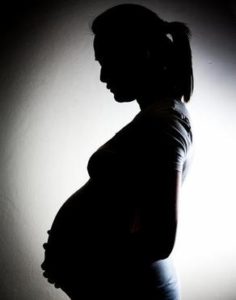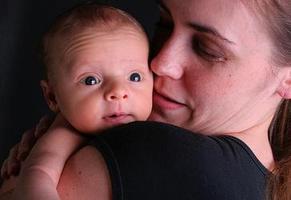Types of Depression
This website details clinical depression but depression comes in many forms, which are briefly described on this page.
Clinical Depression / Major Depression / Major Depressive Disorder
This website focuses on Clinical Depression, which is the most common form of depression. (1) This form of depression is also known as Major Depression or Major Depressive Disorder.
Seasonal Affective Disorder (SAD)
Seasonal Affective Disorder is a period of major depression that most often happens during winter, likely due to the lack of available sunlight on winter days. (2) SAD, characterized by symptoms of anxiety, increased irritability, daytime fatigue, and weight gain, usually lifts in spring. (1)
Although SAD is typically associated with winter, some people experience this type of depression in summer. Warm weather depression arises when the body experiences a delay adjusting to new seasons. (3) Instead of waking and enjoying dawn, the body has a hard time adjusting, which could be due to imbalances in brain chemistry and the hormone melatonin. (3)


Persistent Depressive Disorder / Dysthmia
Persistent Depressive Disorder is characterized by a chronic state of depression exhibited by a depressed mood for most of the days in a period of at least two years. (4) This type of depression causes a low mood over a long period of time but it’s less severe than major depression. (1) The person who suffers from this disorder must not have gone for more than two months without experiencing two or more of the symptoms shown in Figure 1, which can also cause significant distress or impairment in social, occupational, educational, or other important areas of functioning. (4)
Figure 1. Symptoms of Dysthmia
(4)
Bipolar Disorder / Manic Depressive Disorder
People with Bipolar Disorder have moods that range between the extremes of very “low” moods (depression) to high energy “up” moods (mania). (2) Symptoms alternate between these extremes a few times per year or much more rapidly. (1) In the low phase, a person has the symptoms of major depression. (2) In the manic phase, symptoms include extremely high energy, excitement, racing thoughts, and poor judgment. (1) For example, the individual in a manic phase may feel elated, full of grand schemes that might range from unwise business decisions to romantic sprees and unsafe sex. (4) Mania, left untreated, may worsen to a psychotic state. (4) There are four basic types of bipolar disorder, shown in Figure 2 below.
Figure 2. The 4 Basic Types of Bipolar Disorder
- Bipolar I Disorder
- Bipolar II Disorder
- Bipolar Disorder Not Otherwise Specified
- Cyclothymic Disorder
Bipolar 1 Disorder consists of manic, or rapid (daily) cycling episodes of mania and depression that last at least 7 days. Manic episodes may be so severe that the individual may require hospitalization. Depressive episodes typically last at least 2 weeks.
Bipolar II Disorder consists of recurrent depression accompanied by hypomanic episodes (a milder state of mania in which symptoms are not severe enough to cause marked impairment in social or occupational functioning or need for hospitalization, but are sufficient to be observable by others).
Symptoms of Bipolar Disorder exist but don’t meet diagnostic criteria for either Bipolar I or II. However, symptoms are well out of normal range for the individual.
Cyclothymic Disorder is a chronic state of cycling between hypomanic and depressive episodes that don’t reach the diagnostic standard for bipolar disorder but have been present for at least 2 years.
(4)
Psychotic Depression
About 20% of people with depression have episodes so severe that they see or hear things that aren’t really there. (1) Along with the symptoms of major depression, people with psychotic depression have “psychotic” symptoms such as those shown below. In addition, people with psychotic depression may become catatonic and they may not leave their bed. (1)
- Hallucinations (seeing or hearing things that aren’t there)
- Delusions (false beliefs)
- Paranoia (wrongly believing others are trying to harm you)
(2)
Stress Response Syndrome / Adjustment Disorder
People can have a depressed mood when they’re having trouble managing a stressful event in their life, such as the loss of a loved one or the loss of a job. (2) Medications are rarely needed because it tends to clear up over time once the stressful event has ended. (1) It’s important to notice how long a depressed mood lasts after a difficult situation. If the depressed mood doesn’t go away, it can be a warning sign of major depression. (1)
Perinatal Depression
Perinatal depression includes the following mood disorders that can affect a woman during pregnancy and after the birth of her child. (5)
Prenatal Depression
Prenatal Depression occurs during pregnancy. Symptoms include crying, sleep problems, fatigue, appetite disturbance, loss of enjoyment in activities, anxiety, and poor fetal attachment. (5)
The Baby Blues
- Occurs after a baby is born.
- Affects as many as 80% of new mothers.
- Symptoms can include feeling overwhelmed, irritable, frustrated, and anxious.
- Symptoms can also include sudden mood changes, feeling weepy and crying, exhaustion, and trouble falling or staying asleep.
- Symptoms are usually resolved within two weeks of delivery.
(5)


Postpartum Depression
Postpartum Depression affects 10% to 20% of new mothers. The following symptoms occur for more than 2 weeks:
- Frequent episodes of crying or weepiness
- Persistent sadness
- Fatigue
- Feelings of inadequacy or guilt
- Sleep and/or appetite disturbances
- Irritability/mood changes
- Overly intense worries about the baby
- Difficulty concentrating, making decisions, or remembering things
- Lack of interest in the baby, family, or activities
- Anxiety that may manifest as bizarre thoughts and fears, such as obsessive thoughts and fear of harming the infant
- Feeling overwhelmed
- Headaches, chest pains, heart palpitations, numbness and hyperventilation
(5)
Summary
This page provided a brief overview of the various types of depression that exist.
References
- http://www.everydayhealth.com/depression-pictures/different-types-of-depression.aspx
- http://www.webmd.com/depression/guide/depression-types
- http://www.health.com/health/gallery/0,,20515167,00.html
- http://www.ifred.org/types-of-depression
- https://www.health.ny.gov/community/pregnancy/health_care/perinatal/perinatal_depression.htm